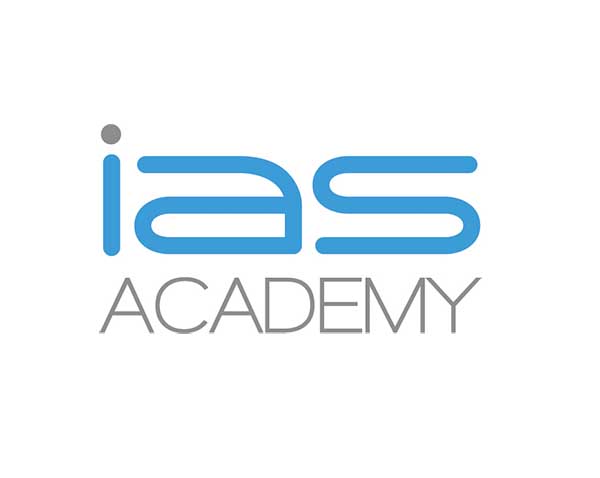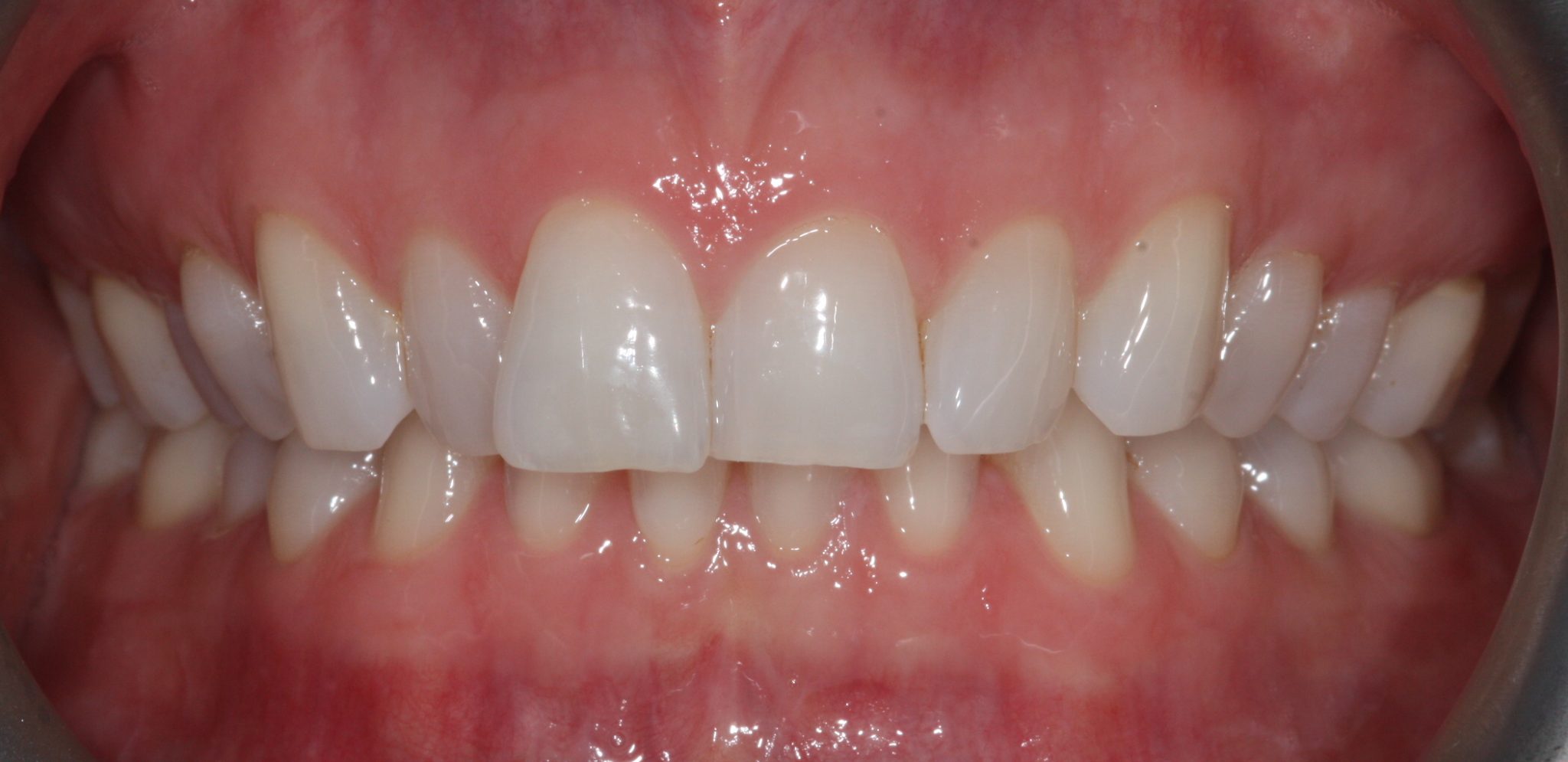Restoring a patient’s confidence to smile – Dr Bhavna Patel
Featured Products Promotional FeaturesPosted by: Dental Design 8th March 2019


I first heard about the Inman Aligner when it was presented by Dr Tif Qureshi at a BACD (British Academy of Cosmetic Dentistry) conference. I subsequently took the Inman Aligner training course and have been offering the appliance to suitable patients ever since. My special interest in orthodontics has led me to attend various anterior alignment orthodontic courses over the years. I found the dedicated online support forum provided by the Inman Aligner team – now IAS Academy – invaluable and second to none other.
I consequently took the ClearSmile Brace Conversion course, and having since embraced the IAS Academy, I have not looked back. I think the IAS Academy ethos of correct case selection, working within your competency, and focusing on thorough orthodontic records and planning is refreshingly reassuring. I like the convenience of being able to provide multiple orthodontic options under the same ‘umbrella’. As well as excellent mentoring by experienced clinicians and specialists, the IAS pathway provides GDPs a clear way to advance their skill set through progressive, well-structured courses. This enables us to offer more bespoke treatment options to our patients.
Case Presentation
This 48-year-old lady presented looking to address her crowded upper anterior teeth. She had not undergone any orthodontic treatment in the past, but had noticed her teeth getting progressively more crowded over the years. This was making her very self-conscious to the point that she had stopped smiling for photos. She desired straighter upper teeth so she could smile more confidently, but the mild crowding in her lower arch did not bother her.
Case assessment
A full orthodontic assessment was carried out (Table 1), including upper periapical radiographs. The patient was medically and dentally fit, with no relevant history to note.
Table 1:
| Skeletal | Class II | |
| FMPA | Average | |
| Lower Face Height | Average | |
| Facial Asymmetry | No | |
| Soft tissues | Average nasolabial angle, lips competent at rest | |
| Overjet | Slightly increased | |
| Overbite | Average | |
| Crossbite | No | |
| Displacement on closure | No | |
| Incisor Relationship | Class II Div 1 | |
| Molar relationship | Right ½ unit Class II | Left ¾ unit Class II |
| Canine Relationship | Right ½ unit Class II | Left ½ unit Class II |
| Teeth Present | 7654321 | 1234567 |
| 7654321 | 1234567 | |
| Centrelines | Not coincident, with lower approximately 2mm to right of upper | |
Treatment planning
Various orthodontic options of single and dual arch treatments were discussed, alongside potential referral to a specialist orthodontist for comprehensive treatment. The patient was not concerned about her lower arch, or bothered about correcting her increased overjet; she just wanted her upper anterior teeth to be better aligned. Using IAS Academy’s SpacewizeTM+ digital crowding calculator software, the space requirement and patient’s suitability for treatment with the Inman Aligner was confirmed. The aim of treatment was to align the upper anterior teeth without changing the bite. Archwize™ 3D planning software was then used to predict that 1.5mm of interproximal reduction (IPR) would be required to achieve the intended result. This was discussed with the patient to demonstrate what we could achieve and what the likely compromises were going to be prior to obtaining informed consent for the treatment (Table 2).
Table 2:
| Problem List |
| Moderate upper and mild lower anterior segment crowding
Increased overjet ½ – ¾ unit Class II canine and molar relationship Incisal edge wear Compliance – will the patient be able to wear the appliance for enough hours a day? |
| Ideal Treatment – Aims: |
| Correct upper and lower crowding, and torque teeth to ideal angulation
Correct Incisor, canine and molar relationships into Class I Correct increased overjet Restore worn incisal edges of upper central incisors |
| Compromised Treatment – Aims: |
| Correct upper anterior segment crowding
Accept lower crowding Accept canine and molar relationship Improve increased overjet Restore worn incisal edges of upper central incisors |
Treatment provision
| Appointment | Progress |
| June 2016 | Initial consultation, orthodontic options discussed; photos taken for SpacewizeTM+ to assess space requirement and suitability for treatment |
| July 2016 | Discussed SpacewizeTM+results; Orthodontic options discussed again; patient opting for ClearSmile Inman Aligner; Impressions taken for Archwize 3D evaluation |
| July 2016 | Archwize 3D report and orthodontic options discussed again; Consent obtained for Upper ClearSmile Inman Aligner |
| August 2016 | Upper ClearSmile Inman Aligner fitted; IPR carried out and composite anchors placed on palatal of upper laterals; wear and care instructions given |
| October 2016 | Progress reviewed; upper incisors rounding out nicely; composite anchor placed on labial of UR1; minor IPR carried out |
| November 2016 | Progress reviewed; good alignment progress noted; minor IPR carried out |
| December 2016 | Progress reviewed; upper incisors aligning nicely; minor IPR carried out |
| January 2017 | Progress reviewed; good alignment noted; patient reports that was unwell and had not been wearing aligner as much; decided with patient to continue regular wear for another few weeks after which we can take impression for bonded retainer |
| February 2017 | Alignment complete; impression taken for upper bonded retainer; patient to continue wearing Inman aligner as a retainer |
| April 2017 | Anchors removed; Retainer bonded; UR1 & UL1 composite edge bonding |
Forum support
All Inman Aligner cases need to be vetted and approved by the IAS Academy team on the forum. I find the online support invaluable – they not only assist in choosing the right cases, but they also guide you every step of the way.
Case appraisal
The patient was absolutely thrilled with the results achieved. She felt the whole process was easy, painless and quick with fantastic results; and less expensive than other anterior alignment treatment options or traditional braces. We did have a slight set back towards the end as the patient had a severe flu/cough and was unable to wear the aligner regularly for a few days. However, although alignment looked good during her review, the patient wished to wear the aligner for a few more weeks prior to impressions being taken for the final retainer. Overall, I was very pleased with the results achieved. My sincere thanks to the IAS Academy trainers for your guidance in helping me deliver this smile to the patient!
Images

Figure 1- Pre treatment smile

Figure 2 – Pre treatment right lateral

Figure 3 – Pre treatment left lateral

Figure 4 – Pre treatment closed bite

Figure 5 – Pre treatment open bite

Figure 6 – Pre treatment upper occlusal

Figure 7 – Post treatment

Figure 8 – Post treatment right lateral

Figure 9 – Post treatment left lateral

Figure 10 – Post treatment closed bite

Figure 11 – Post treatment open bite

Figure 12 – Post treatment upper occlusal with bonded retainer
The Inman Aligner course is part of the IAS Academy pathway of training for GDPs
For more information on the Inman Aligner and upcoming training courses, please visit www.iasortho.comor call 0208 916 2024.
Author bio:
Dr Bhavna Patel BDS MFDS RCS (Eng) is an associate dental surgeon working in mainly private practices – Roseneath Dental Surgery in Byfleet and Bupa Dental Care in Woking, Surrey. She has a particular interest in anterior alignment orthodontics and minimally invasive cosmetic dentistry, especially composite bonding.
No Comments
No comments yet.
Sorry, the comment form is closed at this time.



